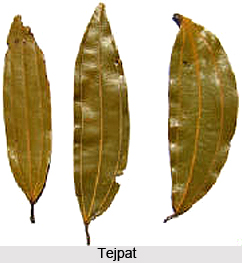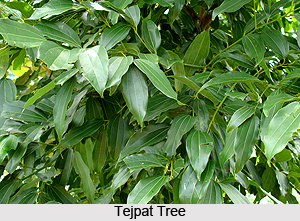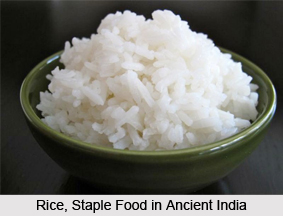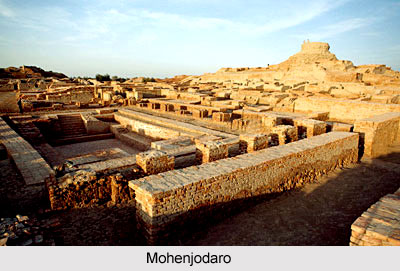 A moderate sized evergreen tree attaining a height up to 8 meters and a girth of 1.4 meters, distributed in tropical and sub-tropical Himalayas (915 to 1220 meters altitude), Khasi and Jaintia hills, and in Eastern Bengal.
A moderate sized evergreen tree attaining a height up to 8 meters and a girth of 1.4 meters, distributed in tropical and sub-tropical Himalayas (915 to 1220 meters altitude), Khasi and Jaintia hills, and in Eastern Bengal.
The species is the source of Tejpat leaves used extensively in Northern and Eastern India as a spice. It is often confused with Bay leaves used as spice in Europe. This confusion was not created in India but by the colonial Europeans who confused the two and started calling Tejpat as Bay leaves.
Leaves are ready for harvesting when trees are 10 years old and they continue to bear for a century. Leaves are collected every year from young vigorous plants and in alternate years from old and weak ones. Collection is made in dry weather from October to December till March. Continuous rain diminishes the aroma of the leaves. Small branches with leaves are dried in the sun for 3 to 4 days and tied up into bundles for marketing. Sometimes the leaves are separated and packed in cylindrical bamboo nets called bora or gungra.
Harvest Season : Throughout the year
Market Season : Throughout the year
The leaves are used mainly as a spice. In Kashmir, they are used as a substitute for pan or betel leaves. It takes in Indian cookery the place of Bay leaves in Europe. It is used as a clarifier in dying with myrobolans.
The leaves of Cinnamomum tamala are carminative and are used in colic and diarrhea. Their extracts are believed to be good cosmetics and are used traditionally in Indian homes. It is also reported to a good diuretic and used for clearing throat congestion as a part of home remedies in India.

The leaves yield about 2 % essential oil. The oil contains 80 to 85 % eugenol. The oil resembles cinnamon leaf oil and also contains d-phellandrene. The essential oil from bark is pale yellow, and contains 70 to 85 % cinamic aldehyde. Oil in either case can be extracted by steam distillation.
The dried leaves of this plant in fact are the main product of commerce. Technology of drying the leaves is simple and can be adopted easily. Although presently traditional sun drying technique is adopted, standard driers may also be used to improve productivity. This technology is also easily adoptable. The second product of this plant is its bark, which may be a cheaper substitute for cinnamon. Processing the bark is also simple. The third product of course is the essential oil from its leaves and bark. For extraction of essential oil also steam distillation equipments of standard design is available which can be easily adopted. Thus by using this resource and adopting simple adoptable technology, rural industrial programme can be planned and implemented to generate employment in rural areas. If proper quality assurance system be developed proper value of the products, thus produced can be ensured .
Botanical name: Cinnamomum tamala Ness and Eberm.
Family name: Lauraceae.
English name: Indian Cassia Lignea.
Indian names are as follows:
Bengali:Tejpata
Hindi, Punjabi and Urdu:Tejpat
Gujarati:Tamalapatra
Marathi:Darchini
Sanskrit:Tamalaka
Oriya:Tejpatra
Tamil:Talishapattattiri
Telugu:Talisapatri.



